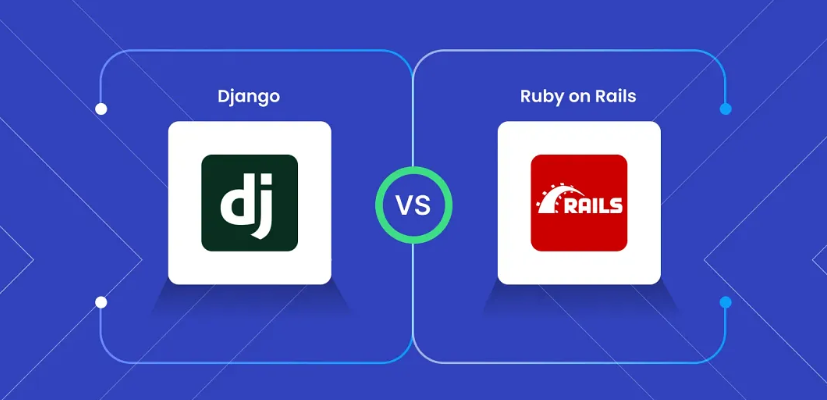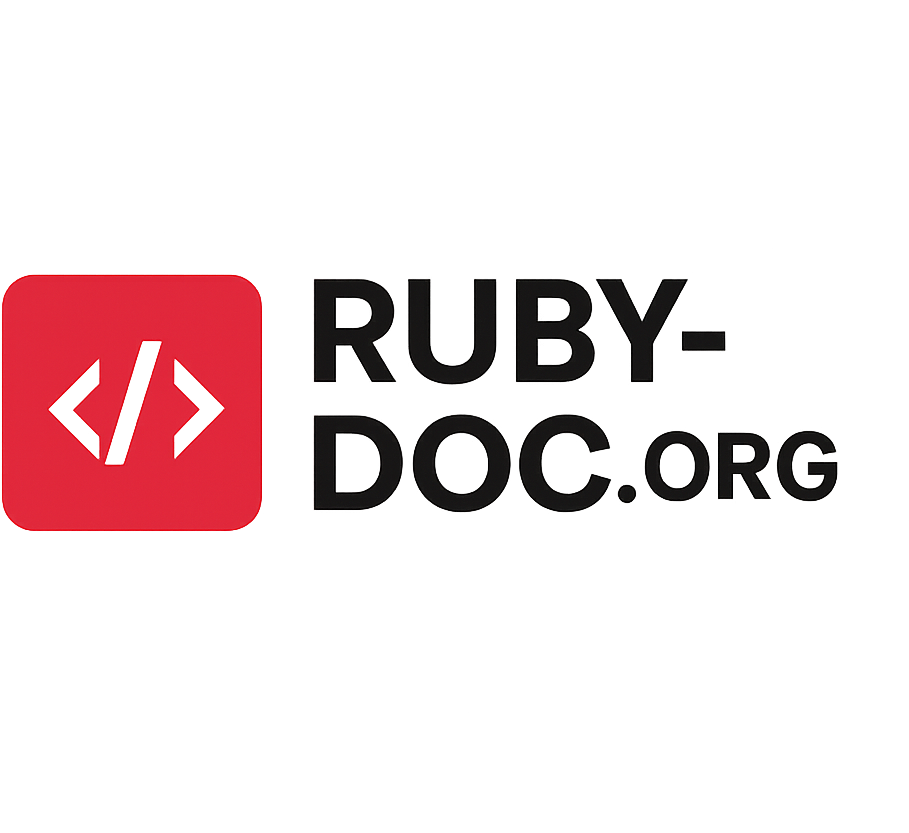
In the ever-evolving world of web development, choosing the right framework is pivotal to the success, scalability, and maintainability of any web application. Two of the most popular and widely adopted backend frameworks today are Ruby on Rails and Django. Although both frameworks serve the same fundamental purpose—building dynamic web applications—they differ significantly in terms of philosophy, syntax, performance, and ecosystem. This article offers an in-depth comparison of Ruby on Rails vs Django to help developers, startups, and enterprises make informed decisions.
1. Overview of Ruby on Rails and Django
Ruby on Rails
Ruby on Rails, often simply referred to as Rails, is an open-source web application framework written in the Ruby programming language. Developed by David Heinemeier Hansson and released in 2004, Rails is known for its emphasis on convention over configuration (CoC) and the DRY (Don’t Repeat Yourself) principle. It provides a full-stack framework with built-in tools to build applications rapidly.
Django
Django is a high-level Python web framework that encourages rapid development and clean, pragmatic design. It was created in 2003 by Adrian Holovaty and Simon Willison and released publicly in 2005. Django emphasizes reusability, pluggability, and follows the “batteries-included” philosophy, which means it comes with a wide array of features out-of-the-box.
2. Language Comparison: Ruby vs Python
At the core of these frameworks are their respective programming languages—Ruby and Python.
- Ruby is known for its elegant, expressive, and flexible syntax. It’s designed to be human-friendly and often feels like reading English.
- Python, on the other hand, is famous for its readability, simplicity, and minimalistic syntax. Python’s straightforward nature makes it a favorite among beginners and data scientists.
Verdict: If you prefer expressive code and creative freedom, Ruby might appeal more. If you prioritize readability and structure, Python is a better choice.
3. Philosophy and Design Principles
- Rails Philosophy: Convention over Configuration (CoC) and DRY principles make Rails powerful for rapid application development. It reduces the number of decisions developers need to make, allowing for faster progress.
- Django Philosophy: Django promotes the principle of explicit is better than implicit, in line with Python’s philosophy. It provides many built-in tools while encouraging clean architecture and separation of concerns.
Verdict: Choose Rails for speed and convention; choose Django for clarity and explicitness.
4. Architecture and Components
- Ruby on Rails: Follows the Model-View-Controller (MVC) architectural pattern strictly. It comes with generators, scaffolding, ActionCable for WebSockets, and ActiveRecord for ORM (Object Relational Mapping).
- Django: Also adheres to the MTV pattern (Model-Template-View), which is conceptually similar to MVC. Django uses its ORM and includes an admin interface, authentication system, and tools for handling forms, sessions, and more.
Verdict: Both frameworks provide robust architecture, but Django’s built-in admin and security features give it an edge for out-of-the-box functionality.
5. Performance and Scalability
Performance and scalability often depend on how the application is written and the infrastructure used, but the frameworks themselves also play a role.
- Rails: Ruby is generally slower than Python, which can affect runtime performance. However, Rails apps can be scaled using background jobs, caching strategies, and horizontally scaling servers.
- Django: Django tends to be more performant out of the box due to Python’s execution speed. It also handles high-load scenarios effectively, and major websites like Instagram use Django to serve millions of users.
Verdict: Django has a slight edge in performance and large-scale scalability, especially for data-intensive applications.
6. Ecosystem and Community Support
- Rails: The Rails community is mature and offers a vast collection of gems (Ruby libraries) to extend functionality. There’s also strong documentation and support from companies like GitHub, Shopify, and Basecamp.
- Django: Python’s massive popularity spills over into Django, giving it access to a broad ecosystem. The Django Package Index (PyPI) contains thousands of reusable apps, and its documentation is among the best in open-source.
Verdict: Both frameworks boast strong communities, but Django benefits from Python’s broader usage in other domains like AI, data science, and scripting.
7. Security Features
- Rails: Provides protection against common vulnerabilities like SQL injection, XSS, and CSRF by default. Rails also includes secure password handling with bcrypt.
- Django: Django shines in security. It provides built-in protections for nearly every major web vulnerability and includes tools like clickjacking protection and SSL/HTTPS settings.
Verdict: Django has a stronger security posture out-of-the-box, making it ideal for projects where data protection is paramount.
8. Learning Curve and Developer Experience
- Rails: The framework’s magic and reliance on conventions can make it easy to start but difficult to debug or understand deeply without experience.
- Django: Django is more verbose and explicit, which may slow initial development but leads to fewer surprises and easier debugging.
Verdict: Beginners may find Django more approachable, while experienced developers might enjoy Rails’ productivity once they master the conventions.
9. Deployment and DevOps
- Rails: Deployment options include Heroku, AWS, and Capistrano. Dockerizing a Rails app is common but may require careful configuration.
- Django: Offers straightforward deployment via services like Heroku, PythonAnywhere, and AWS. Django integrates well with Docker, and WSGI/ASGI compatibility improves deployment flexibility.
Verdict: Django is slightly more flexible for deployment, especially with modern containerization and serverless environments.
10. Real-World Use Cases and Companies
- Companies Using Rails: GitHub, Shopify, Airbnb (initially), Basecamp, and Fiverr.
- Companies Using Django: Instagram, Pinterest, Mozilla, Disqus, and National Geographic.
Verdict: Both frameworks power successful, high-traffic platforms, proving their reliability in production environments.
11. Testing and Debugging Tools
- Rails: Comes with built-in testing frameworks like Minitest and supports RSpec, which is highly popular. Debugging can be done with byebug or pry.
- Django: Includes a robust testing framework integrated with Python’s unittest module. Tools like pdb and Django Debug Toolbar enhance debugging capabilities.
Verdict: Both frameworks provide excellent testing support; the choice often comes down to personal preference in tooling.
12. Flexibility and Customization
- Rails: Encourages convention, which reduces the need for customization but can be restrictive.
- Django: While opinionated, Django allows more explicit control over project architecture and app integration.
Verdict: For developers who value control and clarity, Django offers more flexibility. Rails is ideal for teams who prefer a guided path.
Ruby on Rails vs Django – Which Should You Choose?
When it comes to the Ruby on Rails vs Django debate, the answer largely depends on your project’s needs, team expertise, and long-term vision.
- Choose Ruby on Rails if you:
- Want rapid development and a rich convention-based structure.
- Appreciate elegant, expressive syntax.
- Are building a startup MVP or SaaS platform quickly.
- Choose Django if you:
- Prioritize security, scalability, and long-term maintainability.
- Prefer clear and readable code.
- Are integrating with data science, AI, or Python ecosystems.
Ultimately, both frameworks are powerful, mature, and capable of building high-quality web applications. The choice between Ruby on Rails and Django should align with your team’s strengths, project scope, and future roadmap.
Read our Ruby vs Ruby on Rails article, and our Ruby vs Go comparison too.
